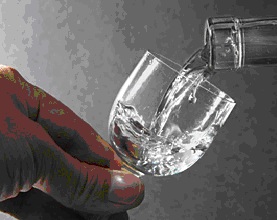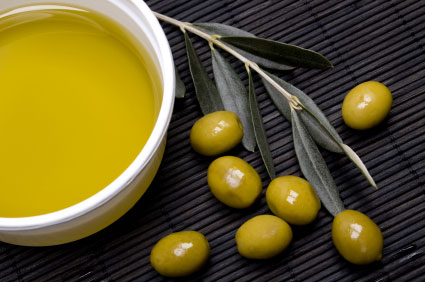
Rakija Croatia guide
Rakija is that ace in the sleeve, that secret weapon against all that is enemy to common man. It will destroy bacteria, relieve you of stomach and muscle pain, annihilate any virus and disinfect a wound instantly. In fact, it used to be called «aqua vitae». Other than its evident medicinal use, it goes down extremely well in any possible occasion. Whether you just woke up out of a coma or are about to roller-skate on a freeway – Rakija is there to enhance the experience.
Not only does it soothe the taste buds after some delicious prosciutto but it also relishes the aftertaste by putting a huge grin on your face. It’s a natural remedy, a list of medical achievements poured into a shot of a traditional beverage. If you ever come to Croatia, this is the stuff to get a hold of right at the border. However, don’t worry about getting short on this particular alcoholic drink, as it is available in every part of Croatia, this Mediterranean gem of a country. Rakija and Croatians mix quite well. Only when Rakija is passed around can you feel the true hospitality of a generous Croatian.
There is a saying among Croatians: ‘if you haven’t tried homemade Rakija, then you just haven’t tried Rakija at all’. It’s not the most expansive tagline ever made but then again – it was probably made at home, under a table, after a bottle of, you guessed it, Rakija. This stuff, if not made properly, will most definitely result in a radiant beverage to say the least. To say the most, it will be the beverage equivalent of a really strong Sambuca.
However, if made properly, this drink is a true drinking testament to the efforts of our fathers, grandfathers and well, you know, till the beginning of time, or at least since the very first Rakija was squeezed out of a truffle somewhere in Istria.
Table of Contents
Rakija Tradition & Heritage
That’s right, the crazy Croatians can make a Rakija out of anything, even a truffle. Hell, I’ve had Rakijas made from watermelon that had more punch than Vladimir Kličko. Just yesterday, I saw one made out of a pine tree. I didn’t taste it though as it was the only bottle in the room and was available for viewing purposes only. That’s how rare this particular variety is. I know for a fact it was made only a couple of weeks ago by someone’s grandmother in an actual basement. This is the only background story that a random Rakija connoisseur needs to verify the authenticity of such a phenomenal and, in this case, komodo-dragon like rare beverage.
My own grandfather still makes Rakija in his own little country house. It makes for a perfect hobby, when you think about it. He used to make his own wine before but as he got older – the wine started to resemble Rakija. The switch to pursue Rakija and Rakija alone was a logical step up in his hobby on the side, so to speak. The entire process is not that complicated. It consists of fermentation and distillation of fruit, vegetables, various herbs, even trees for that matter, depending what you want your Rakija to taste like. ‘If you can suck anything out of it, you can make Rakija with it’. Thats a claim that provides you with a brief but sharp insight into the Rakija making process.
The final product was extraordinary in every sense of that term. It was so strong that only by looking at it, you could feel your body healing itself. The lowest amount of alcohol a variety of Rakija can have without being mistaken for a smoothie is 20%. Anything below that is a milkshake when we’re talking about Rakijas. The highest legal percentage would be around 60%. This particular brand of Rakija which I actually named right before I passed out from it, was completely transparent, as if you just extracted the essence from the tree of life and somehow bottled it.
Do’s and Don’ts When Making Rakija?
The fruit we used to make this variety of Rakija was plum, or “šljiva” in Croatian. The Rakija is therefore named “šljivovica”. In order to actually create this godly nectar, the chosen fruit has to go through fermentation and distillation. And that’s where the magic happens. In the case of “šljivovica” if you distil the fermented plum too early, the consequences can be dire because if the sugar within the plum isn’t heated enough, the quantity and quality of the beverage will suffer for it. On the other hand, if you distill too late, the amount of alcohol will be much lower and as I mentioned before, anything below 20% is not acceptable and does not constitute a Rakija. So the trick is to distill the fermented fruit within two to three weeks after fermentation the latest. Or preferably do it somewhere around the 11th day and try to achieve that perfect ratio required for top quality Rakija.
Still convinced that the beverage standing in front of me is the greatest achievement of my life, I confidently took a shot of Rakija like I had done many times before. The feeling was awe-inspiring. It shot straight through my throat and long before even reaching my stomach; it deeply infiltrated my bones, taking a detour over my spine to actually reach the stomach. Instantly, I felt a wave of relief wash over me. The heat that I felt right afterwards must have skyrocketed my temperature to a thousand degrees as I started sweating like I just ate a really spicy chimichanga.
I called it “Rakija of all Rakijas” because when you had one you felt like you just had them all. Then I hit the floor. The drink became a hit among the locals as long as the topic of intense taste was never discussed. Some claimed that it provided them with relief of such magnitude that they actually fermented the variety themselves but never quite got the ratio as good as my grandfather. He was and still is a true perfectionist in that department.
Varieties of Rakija
Other than the traditional variety such as “šljivovica” which is essential for the northern part of Croatia, there are many more Rakija varieties available for your own personal pleasure. It is true that Croatians can make a Rakija out of everything only this time lets focus on the standard varieties that cultivate the bodies of many merry Croatians.
Travarica
Travarica is an instant classic and specific for the southern part of Croatia. Its name is derived from the name “grass” which means “trava” but refers to a variety of different weeds or herbs. That is why this particular variety of Rakija has a lot of sub-varieties, as much as there are various medicinal herbs and villages in Croatia. Some people call it “The Doctor” because, along with “šljivovica”, it has the most distinct healing characteristics. Often, this sort is based on mint, lavender, rosemary, sage, etc. I.e. if you’re suffering from back pain, nothing will come even close as a massage with some good old Travarica. The smell will be intriguing to say the least, but the relief will be quite worth it.
Medica
Medica is one of the most popular varieties in Croatia. It is specific to Istria but quite renowned throughout the entire country as it spread quickly due to its sweet taste and a mass followship. Its Rakija made out of honey and spiced with propolis. Sometimes it is wrongly referred to as “Medovina” but that’s really a nametag for wine with the addition of honey, a completely different beverage.
Medica is a devil in disguise. Its sweet, flows smoothly, and once you get going you don’t really stop until it’s too late. It has a certain jet lag effect as it can kick you in the ass long after you had your last one. It’s probably the closest Rakija to a liqueur due to its sweetness but is still miles away from any actual liqueur. However, if you run across a Medica, approach it with caution, drink it wisely and be sure it’s from Istria, that’s where the best stuff comes from.
Loza
A truly good Loza is hard to find since its very often enriched with various herbs so the herb to alcohol ratio really has to be spot on. The industrial variety (yes, there is that kind as well) is recommended if you’re suffering from severe toothache, especially if there is any inflammation involved. Nothing, not even a painkiller will numb your tooth more efficiently than a Loza.
Sure, a true connoisseur will tell you there are tremendous home made Loza’s, and he wont be lying but if you’re new to the world of Rakija, best stay away from it until you master the other ones. Along with “Komovica”, Loza has the least taste and smell, and that’s the type of beverage that could be used as a repellent, certainly not something you could enjoy even every once in a while. Basically, if you’re really hardcore and Absinth seems like child’s play to you, then go ahead, have a Loza and knock yourself out.
Komovica
It’s hard to recommend this type of Rakija as it is basically exactly the same as Loza only five times worse. It is actually made from leftovers that were used to make Loza and by heating those leftovers even more than while you were making Loza, you get Komovica, a blend of Rakija intended never to be served on its own but mixed with many other herbs in order to give it that extra kick. I bet this stemmed from the old Croatian saying:”You never throw anything away, no matter how bad it is.” This variety is most frequent in the continental part of Croatia such as Slavonija where the average Rakija consumer can’t even see the difference between Loza and Komovica anymore. It’s impossible to tell the difference after you’ve been hitting it all year, during every possible occasion, doing anything but sleeping. For more information, feel free to address anyone in Slavonija to give you the lowdown on Komovica, Loza’s evil sister.
Viljamovka
Typical for the north-eastern part of Croatia, this is one of the most respected varieties of Rakija in the country. Its basic ingredient is a pear and is not to be confused with the liqueur made out of pears, which is bright red and quite often consumed with a dash of milk. Vilijamovka is one of those Rakijas that is made out of pure varieties of fruit that is rich with sugar and acids. It is redundant to mention that Vilijamovka is never mixed with anything; it’s supposed to be drunk in its purest form because of its highly specific fruity taste.
Mastika
Even though it is not traditionally manufactured in Croatia, this Macedonian type of Rakija has built quite a name for itself over the years here in Croatia. The industrial variety has no medicinal value whatsoever. However, a homemade Mastika has a smell as intense as a strong Sambuca on a really good day. Like Sambuca, it is made out of anis, a plant widely known to be beneficial for airways and stomach problems. However, anis gives it a distinct menthol-like taste, which some may find repulsive.
With the exemption of a few small differences, the Macedonian Mastika is basically the same as the Greek “uzo” or the Turkish “raki” – all three represent beverages that knock you out. Unlike other rakijas which are oftenly poured into 0,03 l shot glasses, Mastika is poured in glasses as high as 1 dcl but is then mixed with water which gives is a milky texture and an equally aromatic taste.
Orahovica
This one is also on the verge of being considered a liqueur. It’s made out of walnuts or “orah” as the Croatians call it. Not rich in alcohol but very rich in flavor. Walnuts are applicable and efficient in a variety of cases. A walnut tincture strengthens the hair root, its oil is used to darken the skin while sunbathing and the fruit itself is excellent for gastritis and fats found in the blood system.
Only because of the above-mentioned traits, Orahovica is considered a miracle worker. It has a darker brown color whose intensity depends on how long the walnut can be kept in a Rakija, and the taste is a combination of sweet and sour.
Biska
To most of you the name represents a plant much more familiar under the name “mistletoe” or “imela” in Croatian. Her fruits are poisonous, while the stems and leafs contain medicinal attributes. In the old days, it served as a cure against epilepsy, blood pressure regulation, hormonal disorder and heart difficulties.
The headquarters of homemade Biska is in Istria, in a town called Vrh whose inhabitants supposedly have their own secret recipe and quite often they mix it with a careful ratio of mistletoe and three other types of herbs. The people that live in Vrh really do have a special recipe for their particular variety of Biska. However, that doesn’t mean that Biska is limited only to Vrh, it only means they make the best Biska that you can find. Sure, there are many other places in Istra that are proud of the Biska but only Vrh can provide you with a true Rakija experience.
Višnjevac
This Rakija variety is made from cherries (“višnje”). The cherries are usually cleaned and put in Loza or Komovica to stay there and ferment. This process results in a sweet dark red liquid which preserves both the strong taste and the smooth flow of one of the finest Rakijas your taste buds can have the pleasure of tasting. This is an easy Rakija to manipulate as you can carefully select whether to make it really strong or more along the line of cherry juice with a touch of alcohol.
You don’t need a house, a backyard, a barrel or anything like that. Cherries can be fermented on the balcony of your apartment. It’s only necessary to get the ratio right. However, an old recipe says that if you add some rum to the mixture, the taste suddenly reaches new heights.
Other Varietis
There are many other varieties of Rakija being branded as Im writing this article. The most promising are the Olive Rakija, Asparugus Rakija, Nettle Rakija, Pine Rakija and Sunflower Rakija. These are guaranteed to revitalize every single cell in your body based on the components of each of them alone. All these are specific to the Istrian region and the best Rakijas really do come from there. During autumn, when all the necessary work has been done before the winter, people that live in the country love to experiment with all sorts of herbs, fruits and ingredients which then results in several Rakija surprises on a yearly basis. Every now and then I hear about a new type of Rakija being made in some wicked part of Croatia. And, yet there is no competition, only secrets that surround the beverage itself.
For instance, when you come to Zagreb, the very capital of Croatia, there are many places where you can have a Rakija but there are only several that serve the real home made Rakija. In Zagreb, one of the best places to get the beverage would be Cica (which means “titty” in Croatian), an extremely small bar in Tkalčićeva Street at the very heart of Zagreb, located merely a couple of feet from the Ban Jelačić square. The bar can take up to 20 or 30 people inside but most of the action is happening outside anyway. The place gets packed almost every day, especially when the sun goes down. I’ve seen tourists stumble upon this place by accident and just take a Rakija even though they never heard what it was. Their eyes widened as they tasted the beverage for the very first time and it was only a matter of time until they ordered a second bottle to finish the evening off with a kick. What they didn’t know was that the kick comes in a bit late so leaving the actual bar always turns out to be a mission for the non-local folks. The most famous Rakija that you should try out in Cica is either the one made from rosebuds or the one made from chestnuts. These are truly top of the line. And if you ask the owner where he got them from, he won’t share that information even if his life depended on it.
In Istria you pretty much can’t fail because wherever you go, you will most certainly get the real deal. Just try to avoid fancy restaurants, as they are the last ones to have high quality Rakija and they usually water down everything they have so Rakija is no different to them. My advice would be to check out the local hidden taverns in Istria, because that is where the true Rakija masterpieces are held. As Istra is my home, I often go back there to visit and recently I entered a tavern that had about 20 different varieties of Rakija to offer. Rakija is exploding all over Croatia and its only a matter of time before we have Rakija cellers in our houses stacked with countless varieties of this highly exclusive beverage. Even though it is highly exclusive, it still remains available to everyone.
From Istra through Dalmatia and over to Dubrovnik, Rakija was passed along generation after generation and it quickly became the traditional beverage of an entire country. You really have to taste it to believe it; a shot of Rakija can go a long way.
Celebration With Rakija
In the very beginning of Rakija, the beverage was often used as a confirmation that anything that resembled a social event was finalized successfully. For instance, if you got married that meant you had to make a toast with a Rakija to confirm the damn thing actually happened and that it wasn’t a figment of someone’s imagination. When buying a house or an apartment, right after signing the purchase contract, you seal the deal with a Rakija. When somebody’s son got baptized, it was pretty amazing that actual water was used to baptize the kid. However, that was soon compensated with heavy amounts of this passionate drink.
Soon it became evident that you don’t really need a special occasion to go down to funky town with your best pal Rakija. All you needed was a recipe or a supplier, the rest was in the excuses and thank god for excuses cause everybody s full of them. Next thing you knew, it became a great appetite opener, mmm, what a great opportunity to down a Rakija, right before lunch, dinner, or…brunch? Then came winter and you had to go out and get some wood for the stove. Thank God I have some Rakija, which would warm me out in the cold. Headache? Damn, so glad I have Rakija. A worldwide epidemic you say? I better go and bathe in Rakija. Anyway, you get the point, it’s as common as sugar and every household should have it.
NOTE: Thanks to Moreno for this insight story on Rakija









Just now found this rakija story and would very much like to reprint it on my blog with your permission. I love reading your posts and am in awe of your vast knowledge of Croatia.
Hi Carol, you may of course reporint it, just make sure there is link back to the orignial story on my site.
Kindest regards,
Morten
So my brother in law just got back from Serbia witha Birthday bottle of Rakia or whatever it’s called. I was bored so I just did 5 shots for fun. First shot – aghhhh second shot aghh 3rd..hmmm 4th and 5th hmmmm. This is interesting stuff
Looking forward to trying as many of these As possible during 4 day stay and visiting other cities in Croatia. This article so very interesting and informationa, thank you.
Šljivovica didn’t originate in Istria. It originated in Serbia, during the ottoman rule. It derived from the drink “Raki”.
Probably the first Rakija made in the Balkans and generally with the Slavic people was in Bulgaria and it was purely made with herbs.
Lozovaca and Sljivovica are typically Serbian and are also Serbian national drinks.